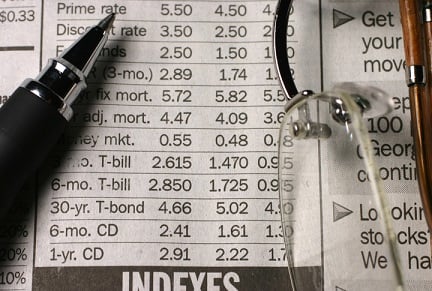Fixed-income expert says strategy still complements core investment plan despite caution from Bank of Canada over interest rates

Short-duration, fixed-income strategies are still an ideal complement to your core investment, according to an industry insider, after the Bank of Canada held interest rates yesterday.
The Bank stuck with its 1.25% rate, noting the escalating uncertainty around protectionist policies without explicitly blaming US President Donald Trump’s threat of trade tariffs on steel and aluminum.
The prospect of a trade war, the potential negative consequences for Canada of a new NAFTA deal, the cooling housing market and the weakening loonie all meant the Bank put the brakes on another rate rise.
Kevin Flanagan, senior fixed-income strategist at Wisdom Tree Asset Management, said he still believes there will be two more hikes this year, albeit with less conviction than he had two months ago. He said in terms of fixed income, strategies that focus on short duration are still a good ploy for investors.
“You can have a core investment strategy but a complement of short duration even though we are saying that maybe this is a little more cautious, maybe this tilts it a little to the dovish side.
“The bottom line still leads you to believe that unless something dramatic changes, the Bank of Canada is still going to move ahead with gradual policy hikes both this year and next year.
“Is it one or is it two? [Who knows] but it’s not as if they are going to stop and starting lowering rates again, right? We’re still in a rate hike kind of cycle. Short duration will continue to play a role for investors. Those investors who feel that they still want to be a little bit more defensive, I think this continues to play into that hand.”
Flanagan said there is no doubt that Trump’s threat – he went further yesterday and said tariffs will be decided on a country-by-country basis – and Canada’s weak NAFTA hand played into the Bank’s decision.
He added that the Bank appears both data and headline dependent in deciding where they want to go next.
He said: “I think what [the Bank] is trying to do is respond to real-time developments. First off, if you look at the side-by-side comparisons in the policy statement, the first thing that strikes you obviously is the acknowledgement that trade policy developments are an important and growing source of uncertainty, to quote them specifically.
“That was added from what we saw in January, so there’s no doubt that that is a reference to the proposed tariffs we’ve heard from the Trump administration.”
He added: “There seems to be more concern with respect to trade and they were also like, let’s monitor what’s going on in the housing area and let’s monitor what’s going on in respect to credit as well. From that vantage point, we’re maybe a little more cautious than where we were a couple of months ago.”


